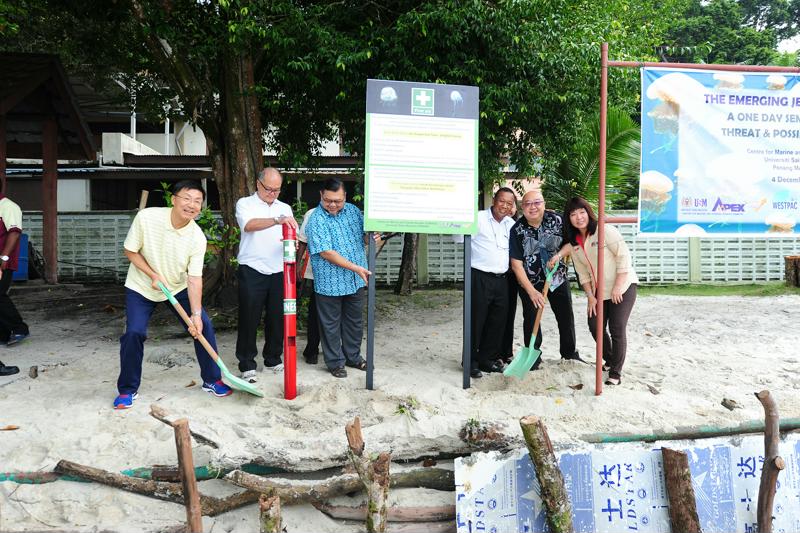USM LEADS 10-NATION RESEARCH ON JELLYFISH THREAT

TELUK BAHANG, 5 December 2017 – Universiti Sains Malaysia (USM) is leading the team of experts from 10 countries in the region in conducting the research on jellyfish, which aims to seek solutions in managing and staving off cases involving lethal jellyfish stings.
According to the Director of the USM Centre for Marine and Coastal Studies (CEMACS), Professor Dato’ Dr. Aileen Tan Shau Hwai, USM was selected by WESTPAC to lead the research and to draft a five-year comprehensive plan in preparing to deal with the threat caused by jellyfish.
Aileen stated this at the press conference in conjunction with the one-day workshop on “The Emerging Jellyfish Threat: The Threat and Possible Responses,” held at CEMACS in Teluk Bahang, Penang.
The workshop saw the participation of jellyfish experts from Malaysia, Japan and Thailand, in discussing the latest issues on jellyfish and in sharing experiences on ways and means of dealing with jellyfish stings which could be fatal.
The experts agreed that rinsing the affected area using ‘vinegar’ is the best means of neutralising and retarding the spread of the venom throughout the human body, however there are those who use the juice from the leaves of the Beach Morning Glory flower.
“Thus, we have erected warning signs on the jellyfish threat as well as the steps to take, in addition to the advice on using vinegar for the victim,” said Aileen.
However, for the fishermen in Penang especially in Balik Pulau, they would treat the affected area with the oil extracted from the sea cucumber.
“We would apply the oil on the affected area, but there would be some with weaker immunity who would lose consciousness, and they
would be sent to the hospital for medical treatment,” said Wan Mohizan Wan Hussein, representing the Balik Pulau fishermen.
For long-distance swimming coach, Philip Tan then said, at times, organisers of competitions fail to emphasise the safety aspect with regard to the competing swimmers.
“I hope that in the future, organisers would be more cautious and choose safer environments,” added Philip Tan.
According to a lecturer from CEMACS who is also a marine life expert, Professor Dr. Zulfigar Yasin, there were 600 cases of jellyfish stings reported for the past three years in Langkawi, with three cases involving fatalities.
“I hoped that through these researches, we could prepare a Standard Operating Procedure (SOP) manual on the steps to take for the victims and civilians, as well as periodic monitoring at sea to identify what are the best times for organising watersports events and the mating season of jellyfish,” added Zulfigar, who also presented a brief on “Serious Concerns about Jellyfish and our Changing Seas”.
Meanwhile, Aileen also hoped that the government and private bodies, as well as seaside resort operators, would cooperate in dealing with the problem in a collective manner.
For the record, the Box Jellyfish species or its scientific name ‘Chironex’ is considered as the most dangerous species of jellyfish, as the sting could lead to death within a few seconds.
Translation: Mazlan Hanafi Basharudin
- Created on .
- Hits: 1386
